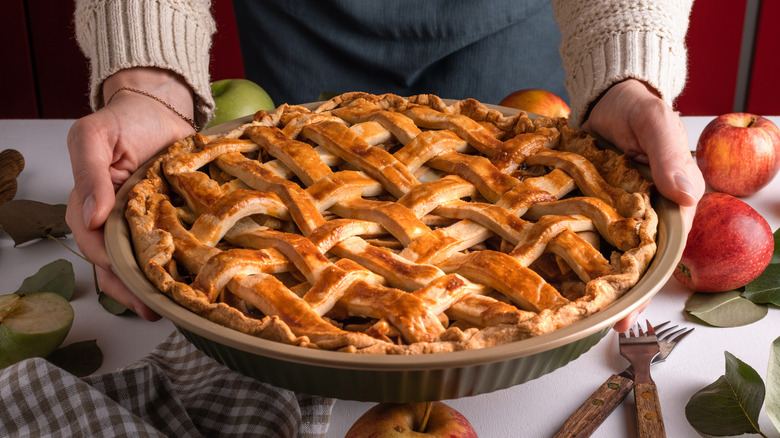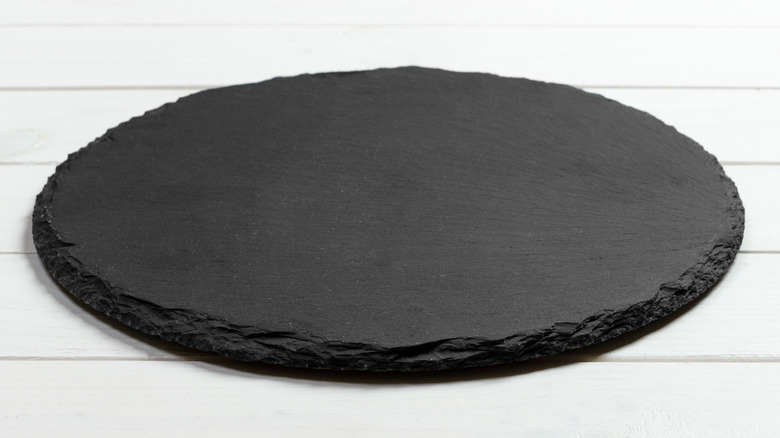Avoid Soggy Bottoms On Pies With One Baking Tool
Whether you're making a brown butter salted maple pumpkin pie or easy Swedish apple pie, it's no secret that a soggy bottom is the bane of a baker's existence. A lot of the explanation lies in the filling: If you're making a pie that has a wet filling and you're using a raw crust, you run the risk of the pastry not setting fast enough in the oven, resulting in a gummy bottom. While there are tons of tips to avoid this, from blind baking to venting your pie, there's one tool that can help get you a perfectly cooked bottom every time: a baking stone.
Typically used to make homemade pizza, a baking stone mimics a high-heat brick in that it traps and evenly distributes heat directly into baked goods, giving them an even browning and crispy texture. Baking stones are available in various materials — like cordierite (a mineral compound), clay, and steel — all of which will work well for setting your pie crust. And since pizza stones are a cheap fix for uneven oven heat, cooking your pie in a dish set on top of the stone negates temperature fluctuations that can mess with the dessert.
This tool can be used for all kinds of pies, from fruit-filled ones with a flaky crust to recipes that use a graham cracker base, like pumpkin pie. And whether you need to par-bake your crust, or you're baking the entire dish together, both techniques can benefit from a good stone.
How to use a baking stone for perfect pies
When using a baking stone for your pies, one of the most important notes to keep in mind is that it needs to be preheated for at least 30 to 40 minutes before using. This allows the stone to come up to temperature and work its magic to the fullest. If you forget to preheat the stone, it won't have enough time to absorb all of that glorious heat, which is the entire point of using it to begin with.
Also, if you're attempting to bake a frozen pie, you shouldn't use a baking stone from the start. Putting frozen food directly on a hot stone can cause the tool to crack due to thermal shock. Instead, consider baking your pie halfway through directly on the oven rack, then transferring it to the stone once it's been warmed.
A baking stone is also a good tool to use for reheating pies before serving. Just preheat the stone at about 400 degrees Fahrenheit before putting your pie on top. Let the pie warm through completely on the stone before slicing and serving. This will help to restore the crispy crust you worked so hard on in the first place. And if you don't have or can't find a pizza stone near you, you can use an preheated, inverted baking sheet or cast iron skillet to achieve similar results.


